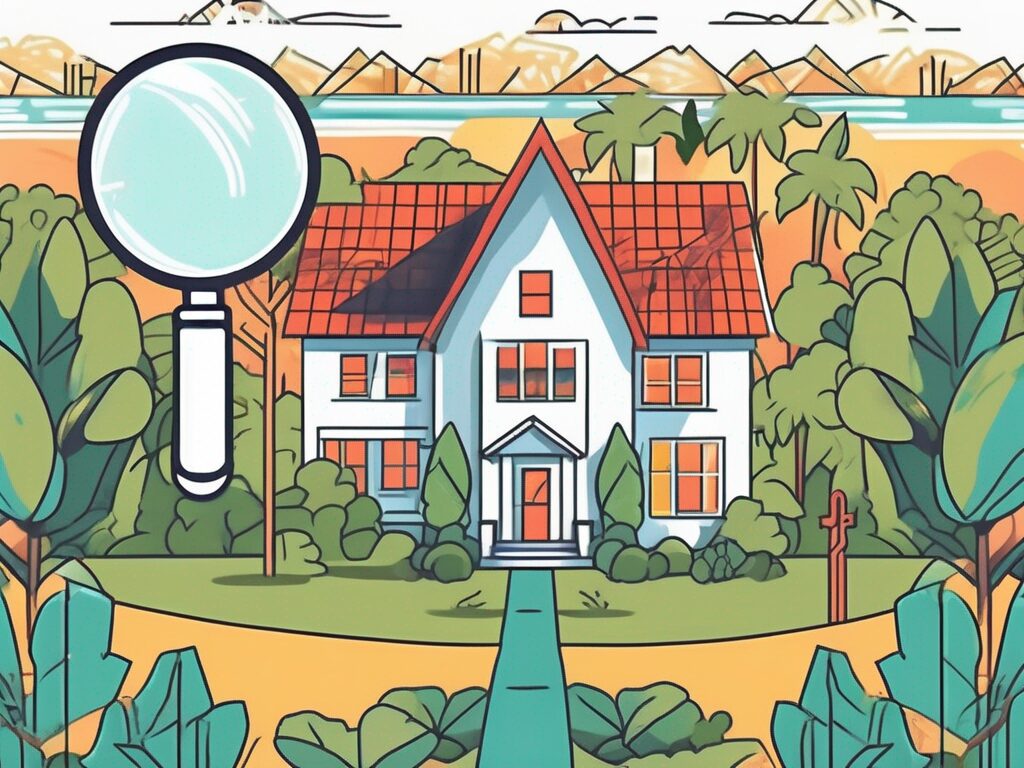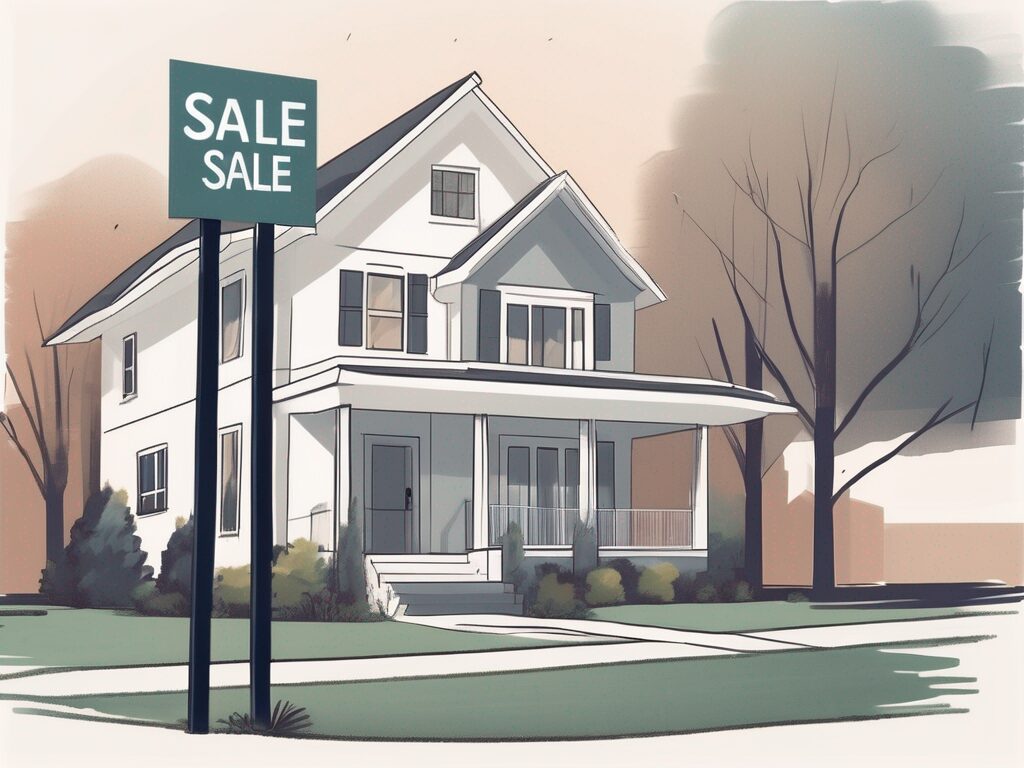
Agent A-Team or Solo Superhero? Finding the Right Real Estate Partner for Your Selling Journey in Wildwood Florida
When it comes to selling your home in Wildwood, Florida,…
January 29, 2024
When it comes to selling your house, one of the key factors you need to be aware of is the average number of showings it takes to find a buyer. This metric can give you valuable insights into the market conditions and help you set realistic expectations for the selling process. In this article, we will explore the reality of showing your house, alternatives to traditional showings, and the various factors that can influence the number of showings you can expect. By understanding these factors, you can make informed decisions and optimize your selling strategy.
When you decide to sell your house, you open your doors to potential buyers, allowing them to view your property and envision themselves living in it. This process, known as showings, is a crucial step in the selling process. Showings give buyers the opportunity to assess the property’s condition, layout, and features, ultimately helping them decide whether it meets their needs and preferences.
During showings, potential buyers will explore every nook and cranny of your house, asking questions and envisioning how they would utilize each space. As a seller, it’s essential to prepare your house for showings by decluttering, cleaning, and staging it to maximize its appeal.
However, the process of showing your house is not just about preparing the physical space. It also involves understanding the psychology behind buyers’ decision-making process. When potential buyers step into your house, they are not just looking for a place to live; they are looking for a home that resonates with their lifestyle and aspirations. They want to feel a connection with the property, envisioning themselves creating memories and building a future within its walls.
Therefore, it’s crucial to create an inviting atmosphere during showings. Consider adding personal touches that reflect the warmth and character of your home. This could include fresh flowers on the dining table, scented candles in the living room, or soft music playing in the background. These small details can make a significant impact on potential buyers, helping them feel more emotionally connected to the space.
Now that you have an understanding of what showings entail, let’s delve deeper into the average number of showings in the selling process and why it matters.
The number of showings your house receives can vary depending on various factors, such as location, price, and market conditions. On average, sellers can expect to have around 10 to 15 showings before receiving an offer. However, this number can be higher or lower depending on the demand for properties in your area.
Why does the average number of showings matter? Well, it provides valuable insights into the level of interest your house is generating among potential buyers. If you’re consistently receiving a high number of showings without any offers, it may indicate that there are some issues with your property that need addressing. On the other hand, if you’re receiving very few showings, it might be worth reassessing your marketing strategy or adjusting the price to attract more attention.
Furthermore, the number of showings can also impact your selling timeline. The more showings you have, the higher the chances of receiving multiple offers and potentially selling your house faster. Conversely, if you’re not getting enough showings, it might take longer to find the right buyer.
Therefore, it’s essential to work closely with your real estate agent to monitor the number of showings and analyze the feedback from potential buyers. This feedback can provide valuable insights into what buyers are looking for and help you make necessary adjustments to increase your chances of a successful sale.
The average number of showings can vary depending on several factors, including market conditions, time of year, price range, property condition, curb appeal, location, and agent quality. Each of these factors plays a role in attracting potential buyers and determining the number of showings your house may receive.
Market conditions are a crucial factor in determining the average number of showings. In a seller’s market, where there is high demand and limited supply, you can expect a higher number of showings as buyers compete for available properties. Conversely, in a buyer’s market, where there is an abundance of properties and fewer buyers, the average number of showings may be lower as buyers have more options to choose from.
The time of year also influences the average number of showings. Spring and summer are typically the busiest seasons for real estate, as buyers prefer to move during warmer months and families aim to settle in before the new school year begins. During these seasons, you can expect a higher number of showings as buyers actively search for their dream homes. In contrast, the winter months may see a decrease in the average number of showings due to colder weather and holiday distractions.
Price range is another important factor to consider. Higher-priced properties often attract a smaller pool of potential buyers, which can result in a lower number of showings. On the other hand, more affordable properties tend to have a larger pool of interested buyers, leading to a higher average number of showings.
The condition of your property and its curb appeal also impact the average number of showings. A well-maintained and visually appealing home is more likely to attract potential buyers, resulting in a higher number of showings. Investing in necessary repairs, staging the property, and enhancing its curb appeal through landscaping can significantly increase the interest and number of showings your house receives.
Location plays a significant role in the average number of showings as well. Properties in desirable neighborhoods or areas with excellent amenities and proximity to schools, shopping centers, and transportation tend to receive more showings. The location’s reputation, safety, and convenience can greatly influence the interest and number of showings your house receives.
Finally, the quality and expertise of your real estate agent can impact the average number of showings. An experienced and knowledgeable agent will have a network of potential buyers and access to effective marketing strategies, increasing the exposure of your property and attracting more showings. They will also be skilled in negotiating and closing deals, ensuring a smooth selling process.
Considering all these factors, it is essential to work closely with your real estate agent to optimize the average number of showings your house receives. By understanding the market conditions, strategically timing your listing, setting an appropriate price, improving your property’s condition and curb appeal, and leveraging your agent’s expertise, you can maximize the number of showings and increase your chances of finding the right buyer for your home.
While traditional showings are the norm in the real estate industry, there are alternatives worth considering. These alternatives offer convenience and flexibility for both sellers and buyers, making the selling process more efficient and streamlined.
One alternative to traditional showings is the use of open houses. Open houses provide an opportunity for potential buyers to view the property at a designated time, without the need for individual showings. This can be particularly beneficial for sellers who want to showcase their property to a larger audience and create a sense of urgency among potential buyers.
In addition to open houses, virtual showings have become increasingly popular in recent years. Virtual tours and 3D walkthroughs allow potential buyers to explore every corner of your house remotely. These immersive experiences can give buyers a realistic sense of your property’s layout and features, reducing the need for in-person showings. By embracing virtual showings, you can widen your pool of potential buyers and potentially decrease the average number of showings necessary to sell your house.
In today’s digital age, technology enables sellers to market and sell their properties without physical showings. This can be particularly advantageous for sellers who are concerned about privacy or who have limited availability for showings. With the help of professional photography and virtual staging, you can create a visually appealing online listing that attracts potential buyers. By providing detailed descriptions, floor plans, and high-quality images, you can give buyers a comprehensive understanding of your property without the need for in-person showings.
Furthermore, some sellers opt for pre-inspections to minimize the need for showings. By conducting a thorough inspection before listing your property, you can identify any potential issues and address them proactively. This can give buyers confidence in the condition of the property and reduce the need for multiple showings.
Another alternative to traditional showings is accepting a cash offer. Cash buyers typically aim for a quick and seamless transaction, meaning they may be willing to purchase your house without the need for extensive showings. Cash offers can be especially appealing if you’re looking for a fast sale or if your property requires significant repairs or renovations.
Additionally, some sellers choose to market their property as a “coming soon” listing. This strategy allows potential buyers to express their interest in the property before it officially hits the market. By generating buzz and creating a sense of exclusivity, you can attract motivated buyers who are willing to make an offer without the need for showings.
It’s important to note that while alternatives to traditional showings can offer convenience and flexibility, they may not be suitable for every seller or property. It’s essential to carefully consider your specific circumstances and consult with a real estate professional to determine the best approach for selling your home.
Market conditions, such as supply and demand, can significantly impact the number of showings your house receives. In a seller’s market, where demand is high and supply is limited, you may experience a higher volume of showings as buyers compete for available properties. This increased competition can create a sense of urgency among buyers, leading to more showings as they strive to secure a desirable home before someone else does. Additionally, in a seller’s market, buyers may be more willing to overlook minor flaws or imperfections in a property, resulting in a higher number of showings even for houses that may require some updates.
Conversely, in a buyer’s market, where supply exceeds demand, you may need to adjust your expectations regarding the number of showings it takes to sell your house. With more options available to buyers, they can afford to be more selective and take their time in making a decision. This can lead to a lower volume of showings as buyers carefully evaluate multiple properties before making a purchase. In a buyer’s market, it becomes crucial to highlight the unique features and advantages of your house to attract potential buyers and stand out among the competition.
The time of year can also influence the frequency of showings. Spring and summer tend to be popular seasons for house hunting, as buyers take advantage of the pleasant weather and increased daylight. These seasons often yield more showings compared to fall and winter when buyers may be more reluctant to venture out in inclement weather. The vibrant colors of blooming flowers and lush greenery during spring and summer can create a visually appealing backdrop for your property, attracting more buyers and increasing the number of showings.
Furthermore, during the warmer months, families with children often prefer to move before the start of the new school year, resulting in a higher demand for housing and consequently more showings. On the other hand, the holiday season in fall and winter can be a slower period for real estate activity, with many potential buyers preoccupied with holiday preparations and gatherings. However, it’s worth noting that buyers who are actively searching during this time may be more motivated and serious about making a purchase, leading to fewer but potentially more qualified showings.
Your house’s price range can directly impact the number of showings you receive. If your house is priced competitively, within the range of similar properties in your area, it is more likely to attract potential buyers and generate more showings. Buyers often have a specific budget in mind when searching for a home, and if your house falls within their price range, it becomes a viable option for consideration.
On the other hand, overpricing your house can lead to fewer showings as buyers may perceive it as out of their budget or not offering enough value for the price. It’s essential to work with a knowledgeable real estate agent who can help you determine an appropriate listing price based on market conditions and comparable sales in your area. Pricing your house competitively can create a sense of urgency among buyers and increase the number of showings as they recognize the value your property offers.
The condition of your property plays a vital role in attracting potential buyers and increasing showings. A well-maintained, clean, and updated property is more likely to capture buyers’ attention and generate interest. When buyers walk into a house that is in excellent condition, they can envision themselves living there and are more likely to schedule a showing.
Conversely, a property in poor condition may deter buyers and result in fewer showings. Buyers often prefer move-in ready homes that require minimal repairs or renovations. Investing in necessary repairs and improvements before listing your house can make a significant difference in the number of showings you receive. By presenting your property in its best possible condition, you create a positive impression and increase the likelihood of attracting potential buyers.
First impressions matter when it comes to showings. The exterior of your house, also known as curb appeal, can greatly influence potential buyers’ interest and the number of showings you receive. A well-maintained and visually appealing exterior creates a positive initial impression, enticing buyers to want to see more.
Enhancing curb appeal through landscaping, fresh paint, and welcoming entryways can make your property stand out and attract more showings. A beautifully manicured lawn, colorful flowers, and neatly trimmed shrubs can create an inviting atmosphere that draws buyers in. Additionally, a fresh coat of paint on the exterior, along with a well-maintained front door and porch, can further enhance the overall curb appeal. By investing in these small but impactful improvements, you increase the chances of generating more showings and capturing buyers’ attention from the moment they arrive.
The location of your house can impact the number of showings it receives. Properties in desirable neighborhoods, close to amenities, schools, and transportation, tend to attract more buyers and generate higher showings. Buyers often prioritize convenience and accessibility when searching for a home, and a prime location can be a significant selling point.
If your house is located in a less popular area or has unique features that may limit its appeal, you may experience fewer showings. However, it’s important to note that even in less sought-after locations, there may still be a niche market of buyers who specifically prefer that area. Working with a skilled real estate agent who understands the local market can help you identify and target the right audience for your property, maximizing the number of showings and potential buyers.
The quality and expertise of the real estate agent representing your house can greatly affect the number of showings you receive. A knowledgeable and proactive agent will strategically market your property, targeting potential buyers and ensuring a high level of visibility. They will utilize various marketing channels, such as online listings, social media, and networking, to reach a wide audience of potential buyers.
Choosing the right agent who understands your goals and has a strong track record can make a significant difference in generating more showings and ultimately selling your house. An experienced agent will have a deep understanding of the local market, including current trends and buyer preferences. They can provide valuable insights and advice on how to optimize your property’s appeal and attract more showings. By partnering with a reputable agent, you increase your chances of reaching qualified buyers and maximizing the exposure of your house in the market.
While the average number of showings can vary depending on the factors discussed above, there is no definitive answer to how many showings are typically needed to sell a house. Each property is unique, and its desirability, location, condition, and price range all play a role in attracting potential buyers. By understanding these factors and working with a trusted real estate agent, you can better gauge the number of showings you may need to sell your house in your specific market.
In conclusion, the average number of showings it takes to sell your house is influenced by various factors, including market conditions, property condition, price range, location, and agent quality. By understanding these factors and considering alternatives to traditional showings, you can optimize your selling strategy and set realistic expectations. Remember, each property is unique, and what matters most is finding the right buyer who sees the value in your house.

If you want the Richr team to help you save thousands on your home just book a call.
 Book a call
Book a call